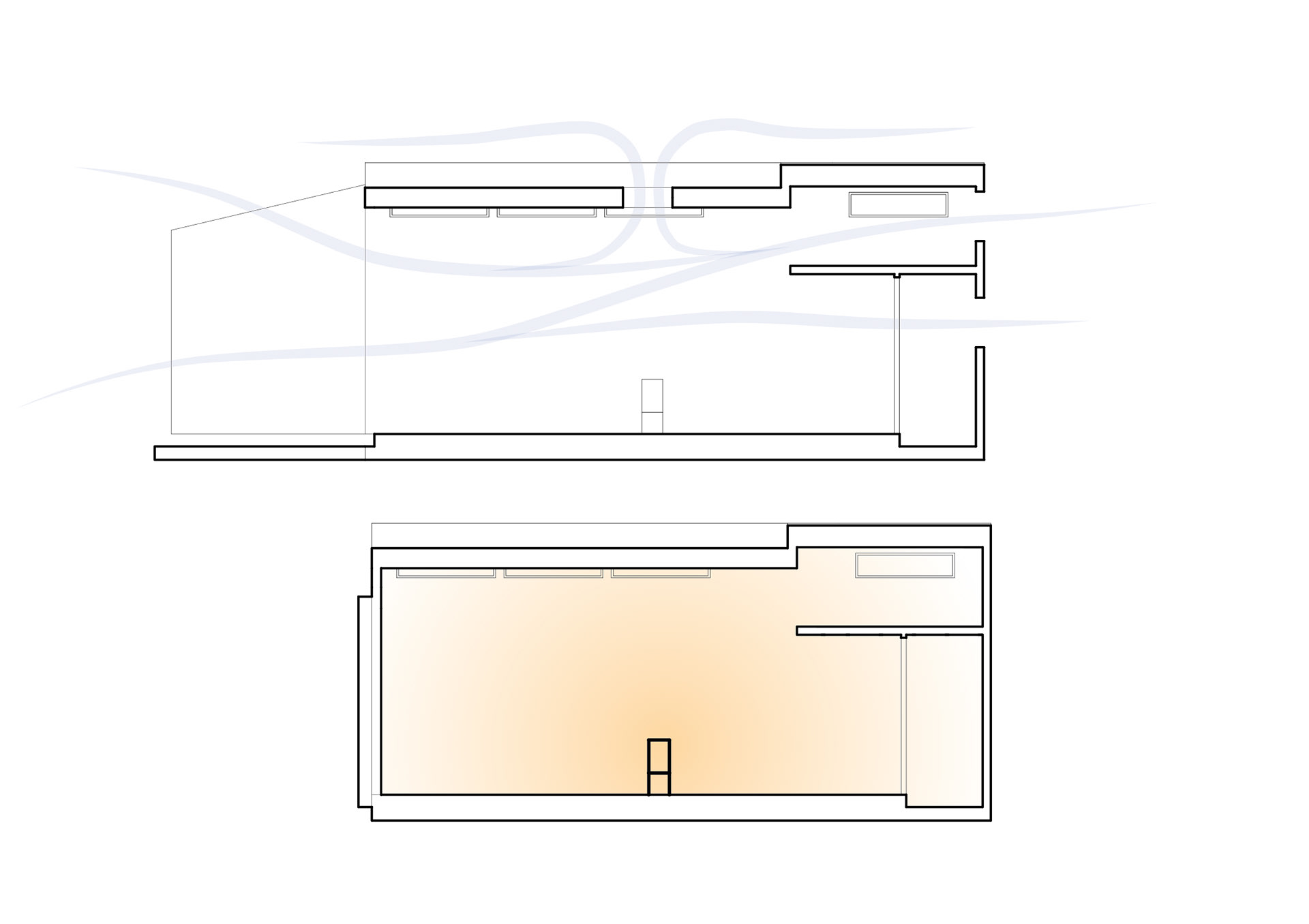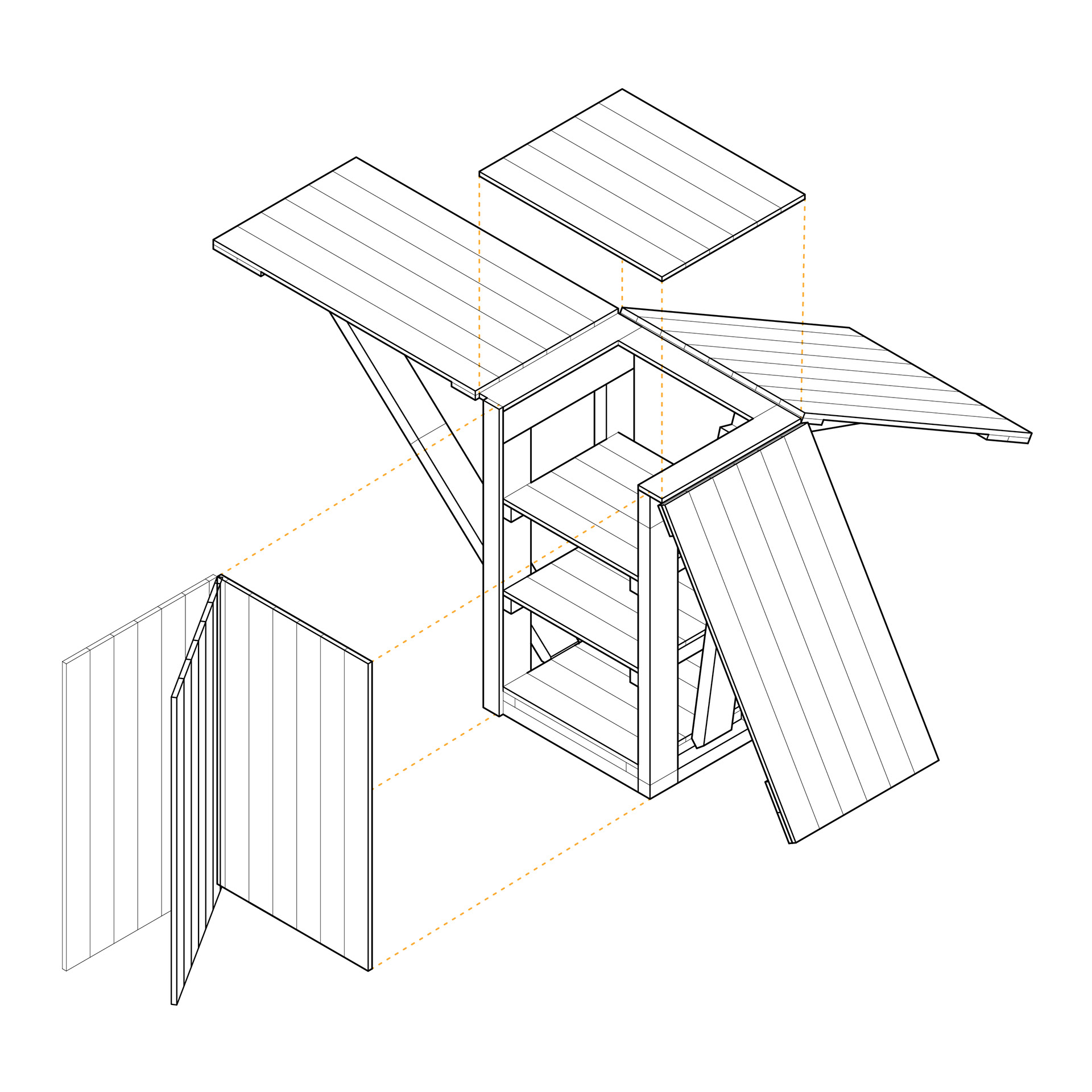Over the summer of 2016, my family’s vacation trailer became unusable. As a result, I took an independent study the following semester to come up with a useful way to re-purpose the trailer’s frame. The result was a mobile tiny home design, speculating a new nomadic way of living for students.
Primarily, the tiny home design seeks to be a net zero, self sufficient, and adaptable means of housing for students that costs less than the average apartment rental over 2 years. Inspired by the way a lotus flower opens and closes, this home changes shape and function to be as efficient as possible. Towards the front of the home, the fixed programs such as the bathroom and kitchen are located. The rest of home is comprised of multi-purposed furniture modules that can be manipulated into multiple spatial arrangements. During travel, the home closes up to its most compact form. In the winter, the home can open slightly for storage but maintains a compact interior volume to conserve heat. In the summer, the home opens and an awning drops down to cool the house and collect rainwater. The home’s adaptability not only makes it function well but also allows it to change with its inhabitants over time.








